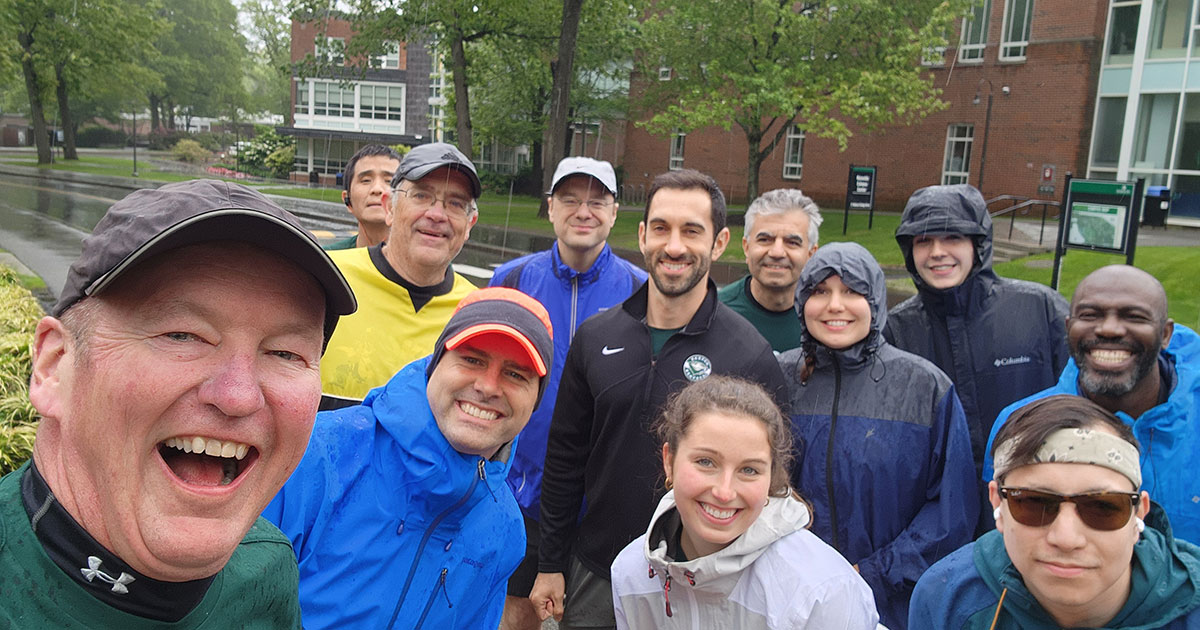How to Keep Your Entrepreneurial Spirit Alive Long After Launch

All successful corporations have roots in risk-taking—those big gambles they took early on as startups to stand out from the crowd. Once established, companies typically want to hold on to this entrepreneurial spirit while taking advantage of their new scale.
The trouble is that with growth often comes risk aversion. Large corporations may say that they prioritize entrepreneurship, but most struggle to follow through. Employees are expected to execute existing duties and often lack the time or support to engage in the freewheeling creative thinking that made the company successful in the first place.
Editor’s note: This article first appeared in Entrepreneur magazine.
To continue growing in today’s quickly evolving marketplace, established companies must actively promote entrepreneurship within their organizations. As the Jeffry A. Timmons Professor of Entrepreneurship at Babson College, I’ve spent 23 years and taught more than 10,000 people how to be more entrepreneurial.
To continue growing in today’s quickly evolving marketplace, established companies must actively promote entrepreneurship within their organizations by unlocking and directing the existing creativity of their employees. Here are three strategies to help your employees unlock their entrepreneurial potential so that your company can continue to innovate and not get left behind.
1. Give Your Workforce the Time and Resources to Be Creative
Entrepreneurship combines the ability to find or create opportunities with the courage to act on them. Some organizations confine entrepreneurship to those developing new products. But truly innovative companies recognize that entrepreneurial skills and behavior lie in the talent across your workforce rather than a single department.
From human resources to marketing, every employee can contribute to an entrepreneurial culture: making internal operations more efficient, refining existing products and launching new ventures. For your company to reap these benefits, however, your employees need time and resources to explore new ideas.
Try creating funds for experimentation. Open time in employees’ schedules for creative thinking. Cutting one hour of a redundant meeting for a 10-person team could yield 10 hours of individual employee exploration time. Don’t shoot down ideas if employees can’t make a strong business case yet. New and creative products lack the market data to back up the innovation. Give people the space and time to experiment and collect evidence.
Blocking out time for “innovation days” is also becoming a common strategy. The software company Atlassian designates one 24-hour stretch each quarter for employees to set aside regular responsibilities and tackle something entirely new. The resulting innovations range from installing new energy-efficient bulbs in the office to speeding up software.
Innovation days are a great start. But for the greatest success, entrepreneurship must be a consistent practice that your employees embrace every day. Remember that cultivating entrepreneurial thinking company-wide will take time. Start small in a few departments, then let the practice grow and the culture expand.
2. Make Space to Fail
Failure is an essential part of entrepreneurship, and many companies claim to value it. But when it comes down to it, they’re more likely to reward success within the company’s existing operations than the courage it took to pursue a new idea that didn’t work out. Employees at these companies lack what Amy Edmondson of Harvard Business School dubbed “psychological safety”—the understanding that it’s safe to take the risks that are so critical for learning, like asking for feedback and discussing mistakes.
Part of cultivating psychological safety is helping employees understand that it’s not a big deal if low-stakes exploration doesn’t succeed. Remind team members that one of the benefits of being an established company is that you can absorb small failures. Indeed, if employees are doing their jobs right, you should expect them. Not taking risks, after all, comes with its own cost: stagnation.
Employees also hesitate to take risks when they fear failure will earn them negative feedback or believe that playing it safe is more likely to lead to a promotion. At truly entrepreneurial companies, employees feel confident that risk-taking, within certain bounds, will be accepted and even rewarded. The Indian conglomerate Tata Group, for example, gives a “Dare to Try” award for brave attempts at unsuccessful innovations. You can also encourage risk-taking—whatever the outcome—by celebrating entrepreneurial thinking in performance reviews.
3. Innovate with Intention
Entrepreneurship doesn’t mean aimlessly exploring until you stumble onto the next big thing. It should apply a company’s existing resources toward new efforts in line with its big-picture goals.
Imagine you’re a solar energy company whose mission is promoting green energy. Innovating with intention would mean asking how your existing skills and technology might help support environmental goals outside your current products. You’re still pursuing the same mission and leaning on the fundamentals of what you know—just in different ways.
Encourage employees to reflect on what innovations they might pursue and where their specific talents may be most helpful. Perhaps there’s an opportunity to apply existing expertise to a longstanding problem or to bring prior insights to a new domain with an unexpected connection. The car and motorcycle company Suzuki, for example, leaned on its original expertise producing weaving looms to create an engine-powered bicycle and later, increasingly larger vehicles.
Make sure that employees know what time, financial and other resources are available for experimenting and that projects that grow and show true promise will receive support.
Unlike a startup, you’re not starting from scratch. When it comes to being entrepreneurial, established companies have major advantages. Financial stability, community connections, loyal clients and a large and talented workforce are all valuable resources that can boost new kinds of growth and innovation. But to unlock this potential, you’ll need to give your workforce the time and resources to be creative, give them space to fail and encourage them to think big within the means at hand.
Heidi Neck, Ph.D., is the Jeffry A. Timmons Professor of Entrepreneurial Studies at Babson College. She has taught entrepreneurship at the undergraduate, MBA, and executive levels and is the academic director of the Babson Academy for the Advancement of Global Entrepreneurial Learning.
Posted in Entrepreneurial Leadership, Insights






